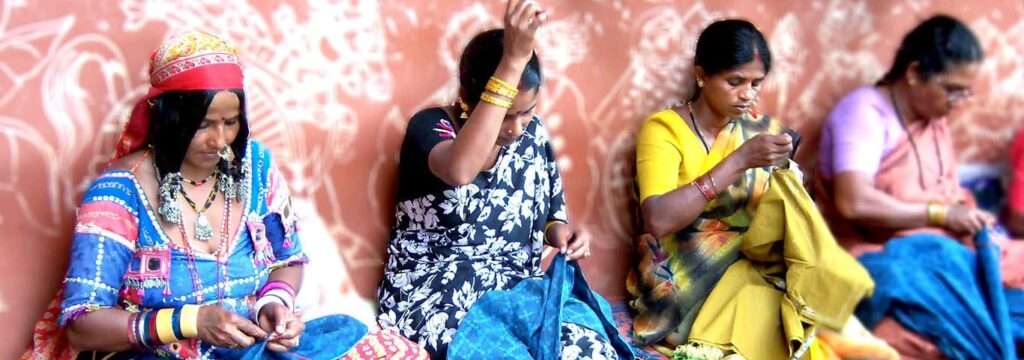
sandur kushala kala kendra
A vivid illustration of linking skills, needs, design and market trends is the Dastkar project with the Lambani embroidery workers in Sandur. As part of their educational, social welfare and developmental activities, Sandur Manganese and Iron Ores Ltd. Co. (SIMORE) had been working with local Lambani tribal women in the North Karnataka mining town of Sandur for twenty years.
The Sandur Kushala Kala Kendra (SKKK) was established as an NGO in 1984 and was initially sponsored and promoted by Sandur Manganese & Iron Ores Ltd. The society was heavily subsidised and remained small-scale due to the lack of systematic design and marketing inputs. Occasional and uncoordinated initiatives in rural and urban marketing, without any analysis of which products would suit a particular market or who their potential customer might be, prevented the society from being economically viable.
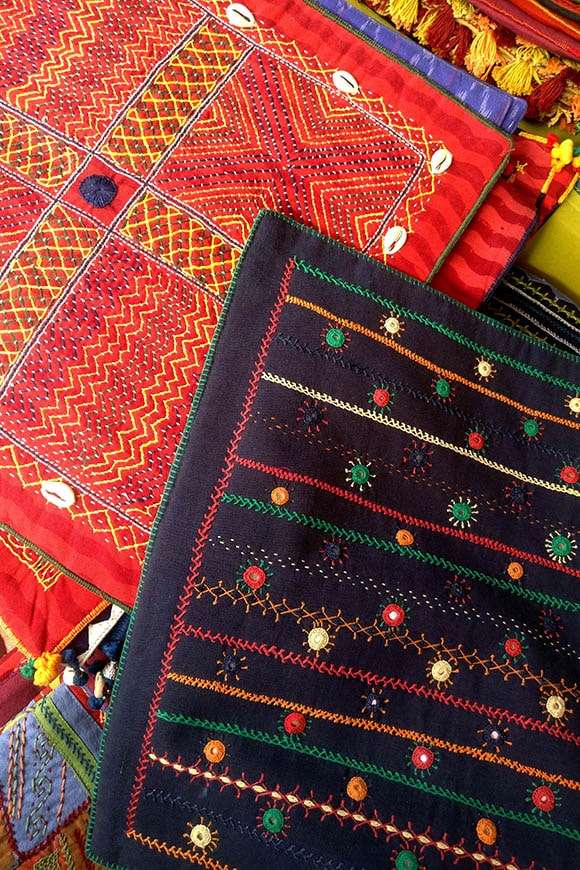
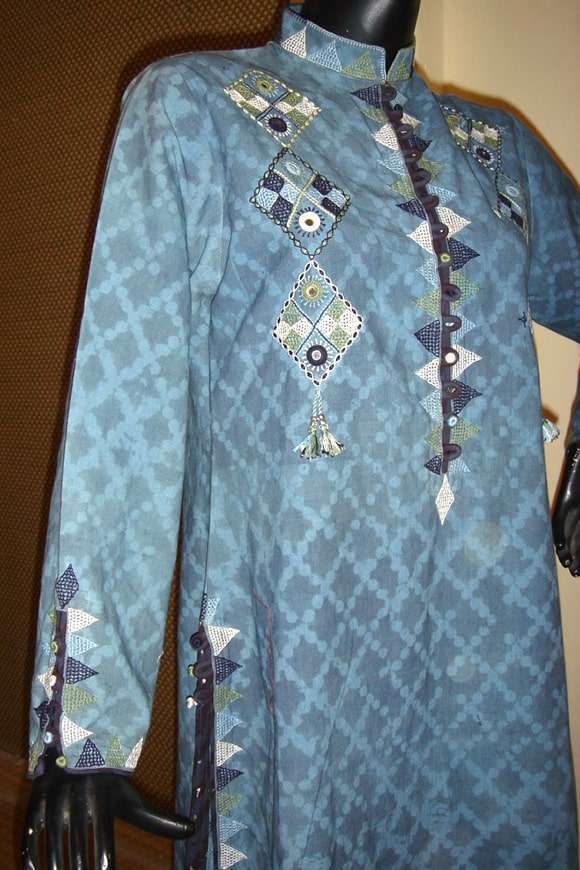
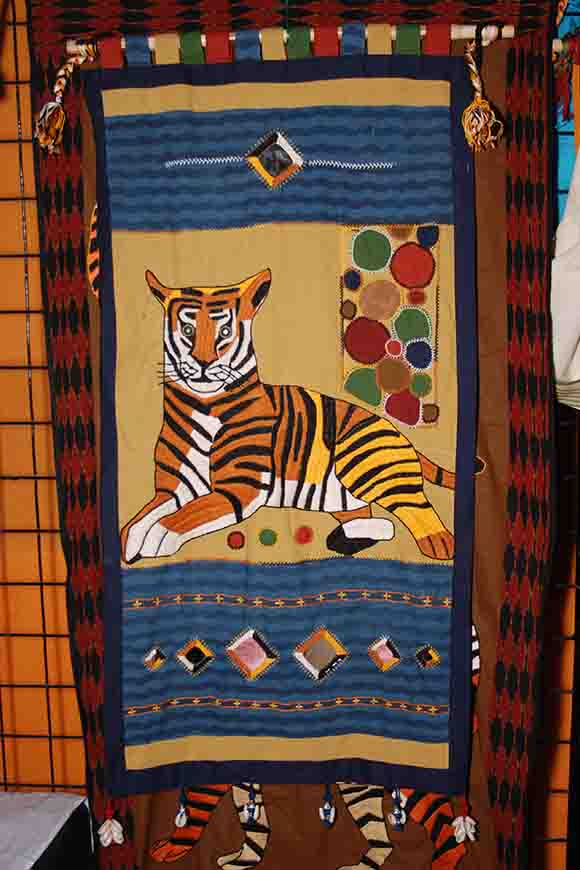
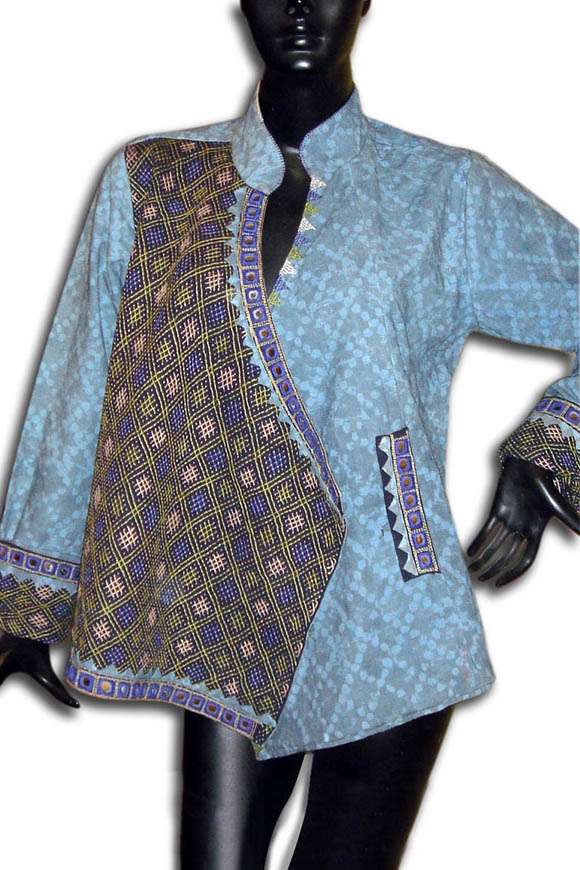
In 1991 SKKK approached Dastkar for help. Dastkar found that Lambani craftswomen who embroidered brilliant garments for themselves were machine-tailoring products in pink plastic. They received a daily wage irrespective of their daily output, skill levels or the eventual selling price or saleability of the product. This naturally meant there was no incentive to increase output or improve work quality. Both output and skill level had sunk to that of the least skilled woman.
Dastkar decided to organise design and product development workshops to create a range of soft furnishings based on the women’s own traditional embroidery. Since Dastkar is always in favour of using indigenous raw materials easily available locally, the Lambanis were encouraged to use local fabrics. However, as these were often chemically dyed Dastkar innovated further through vegetable dye workshops thereby multiplying the product development potential. With Dastkar’s constant emphasis on quality control and production supervision, this soon became one of the most important tasks in the embroidery unit of the Centre.
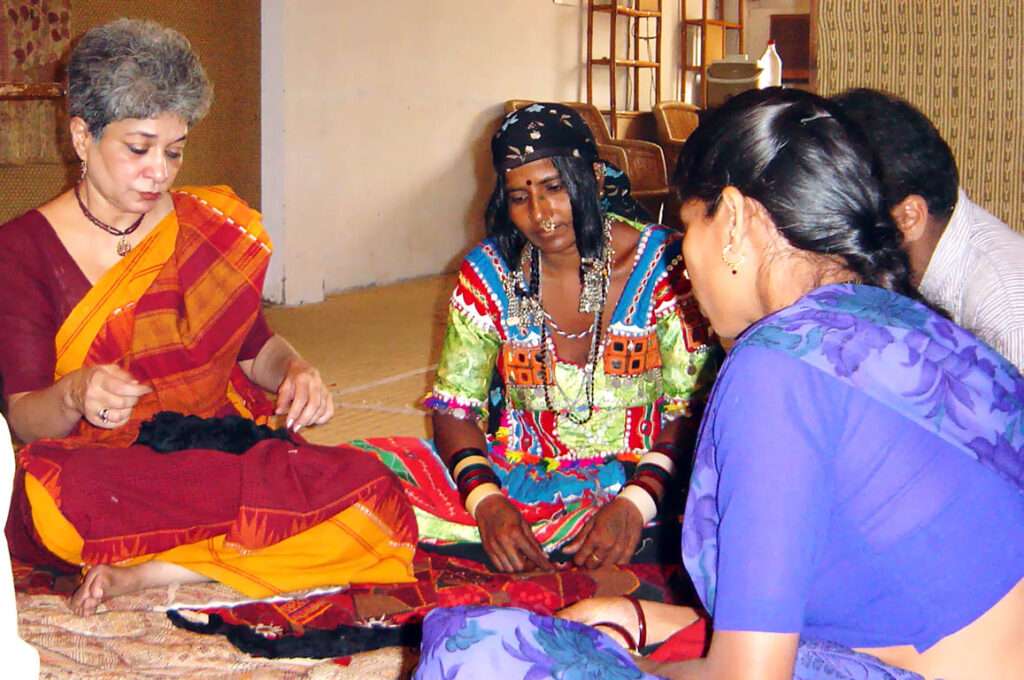
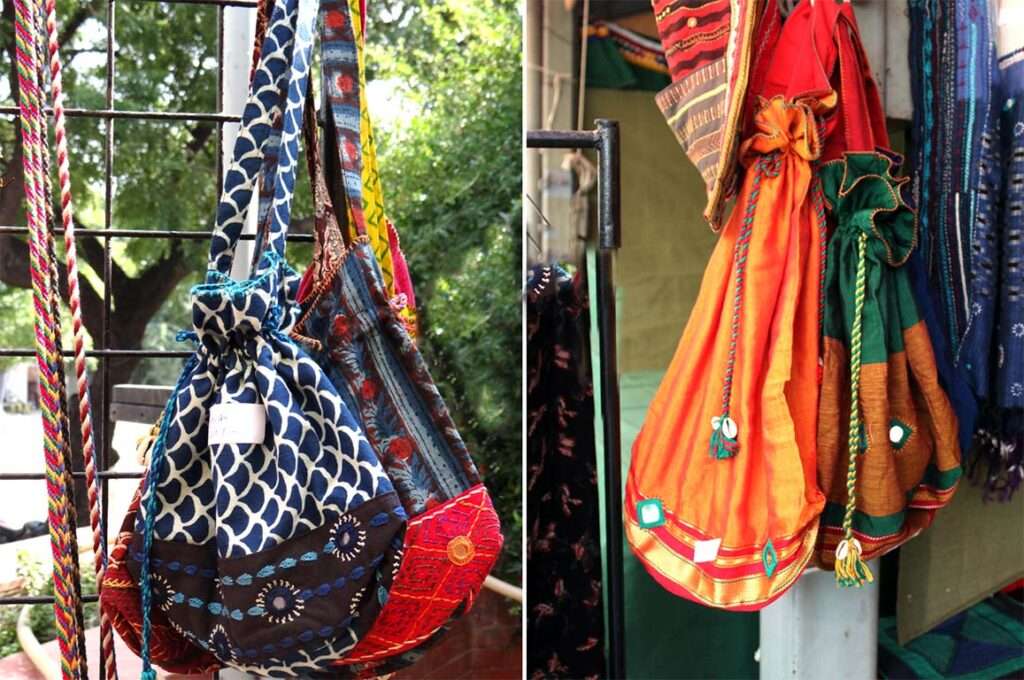
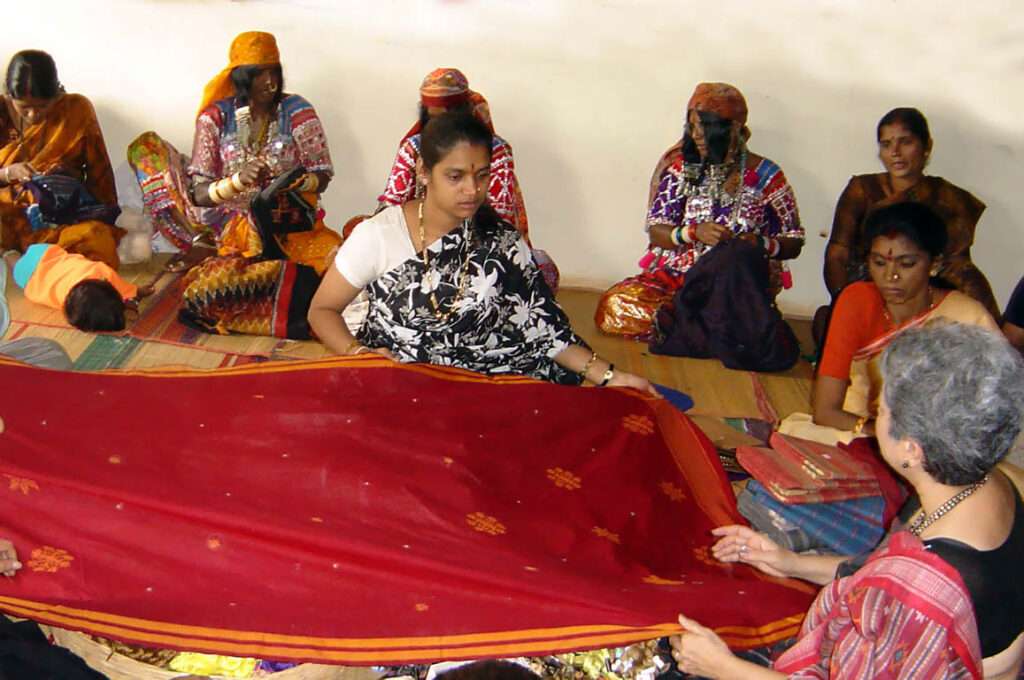
Dastkar also recommended several policy changes, such as a payment policy where the craftswoman be paid per piece, providing incentives for especially fine work and deduction for shoddy or late work to motivate the craftswomen to take personal responsibility in quality control and delivery schedules. Dastkar further recommended that the women not be forced to work at the Centre but take the work home as one of the main advantages of a craft occupation is it needs neither fixed workplace nor infrastructure and can be flexibly worked into household commitments. The outreach of the Centre and number of craftswomen covered expanded considerably.
Within three years of the project, the number of craftswomen benefitting from the Centre had increased from 25 to150, with an additional 50 under training. Their earnings had gone up from Rs.10 a day to approximately Rs.600 to Rs.1000 per month. Today 350 craftspeople earn Rs.2,000 to Rs.6,000 per month and benefit from measures such as subsidized rations, bonuses and insurance through the Provident Fund scheme.
When it began, SKKK was totally dependent on subsidies and financial assistance, today the society is self-sufficient and meets its overheads from its own transactions. The organisation’s annual turnover for 2011-202 was a very healthy Rs.99 lakhs. The Lambani craftswomen of Sandur took on a new vitality and strength through Dastkar’s intervention and today their lives reflect the colour, vitality and vigour of their own traditional embroideries.

